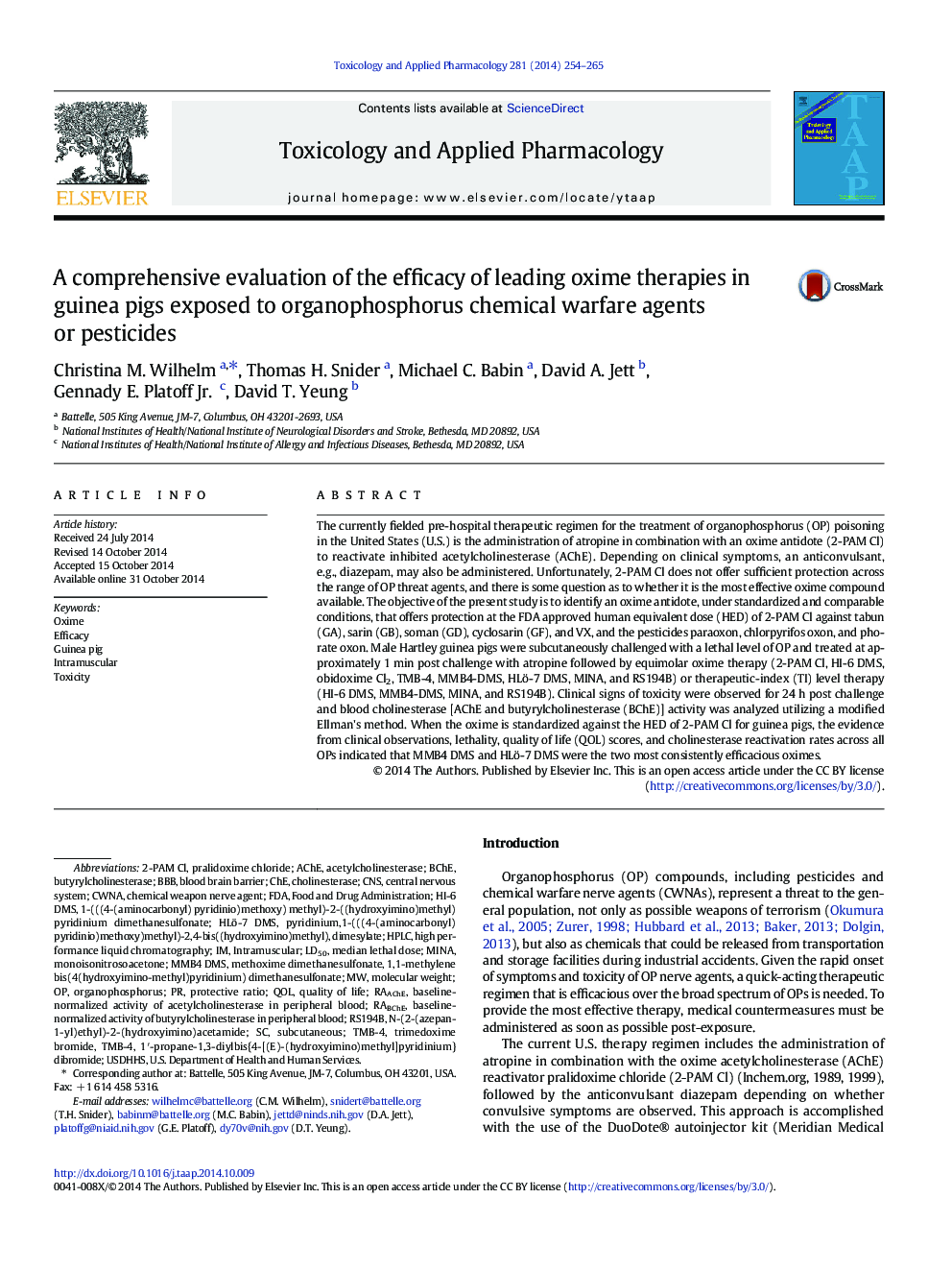| Article ID | Journal | Published Year | Pages | File Type |
|---|---|---|---|---|
| 5846075 | Toxicology and Applied Pharmacology | 2014 | 12 Pages |
Abstract
The currently fielded pre-hospital therapeutic regimen for the treatment of organophosphorus (OP) poisoning in the United States (U.S.) is the administration of atropine in combination with an oxime antidote (2-PAM Cl) to reactivate inhibited acetylcholinesterase (AChE). Depending on clinical symptoms, an anticonvulsant, e.g., diazepam, may also be administered. Unfortunately, 2-PAM Cl does not offer sufficient protection across the range of OP threat agents, and there is some question as to whether it is the most effective oxime compound available. The objective of the present study is to identify an oxime antidote, under standardized and comparable conditions, that offers protection at the FDA approved human equivalent dose (HED) of 2-PAM Cl against tabun (GA), sarin (GB), soman (GD), cyclosarin (GF), and VX, and the pesticides paraoxon, chlorpyrifos oxon, and phorate oxon. Male Hartley guinea pigs were subcutaneously challenged with a lethal level of OP and treated at approximately 1Â min post challenge with atropine followed by equimolar oxime therapy (2-PAM Cl, HI-6 DMS, obidoxime Cl2, TMB-4, MMB4-DMS, HLö-7 DMS, MINA, and RS194B) or therapeutic-index (TI) level therapy (HI-6 DMS, MMB4-DMS, MINA, and RS194B). Clinical signs of toxicity were observed for 24Â h post challenge and blood cholinesterase [AChE and butyrylcholinesterase (BChE)] activity was analyzed utilizing a modified Ellman's method. When the oxime is standardized against the HED of 2-PAM Cl for guinea pigs, the evidence from clinical observations, lethality, quality of life (QOL) scores, and cholinesterase reactivation rates across all OPs indicated that MMB4 DMS and HLö-7 DMS were the two most consistently efficacious oximes.
Keywords
protective ratioUSDHHSLD50FDACWNABChEU.S. Department of Health and Human ServicesbutyrylcholinesteraseQOLQuality of lifeAChEEfficacyOrganophosphorusAcetylcholinesteraseOximeGuinea pigCNSsubcutaneousFood and Drug Administrationblood brain barrierBBBToxicitycentral nervous systemIntramuscularmedian lethal doseMolecular weightpralidoxime chloridehigh performance liquid chromatographyHPLCCHECholinesterase
Related Topics
Life Sciences
Environmental Science
Health, Toxicology and Mutagenesis
Authors
Christina M. Wilhelm, Thomas H. Snider, Michael C. Babin, David A. Jett, Gennady E. Jr., David T. Yeung,
